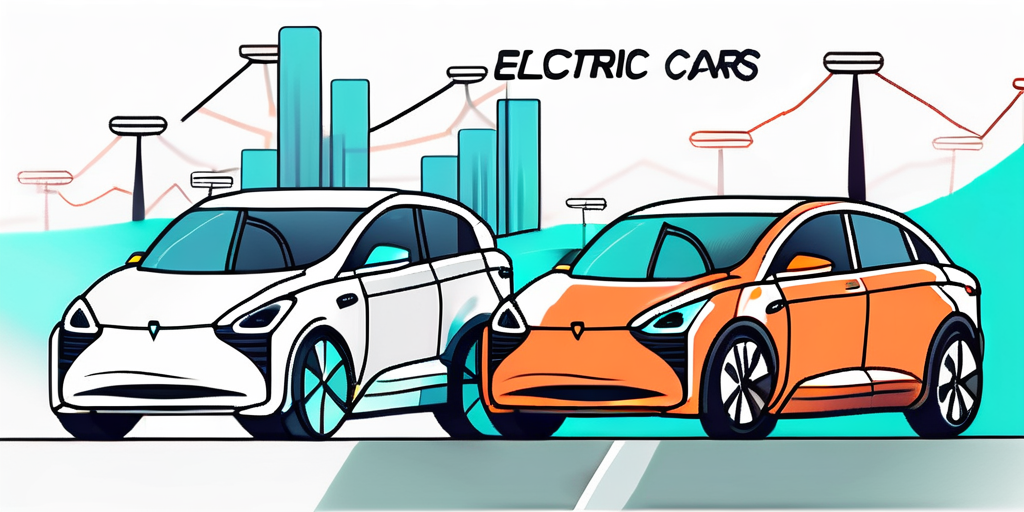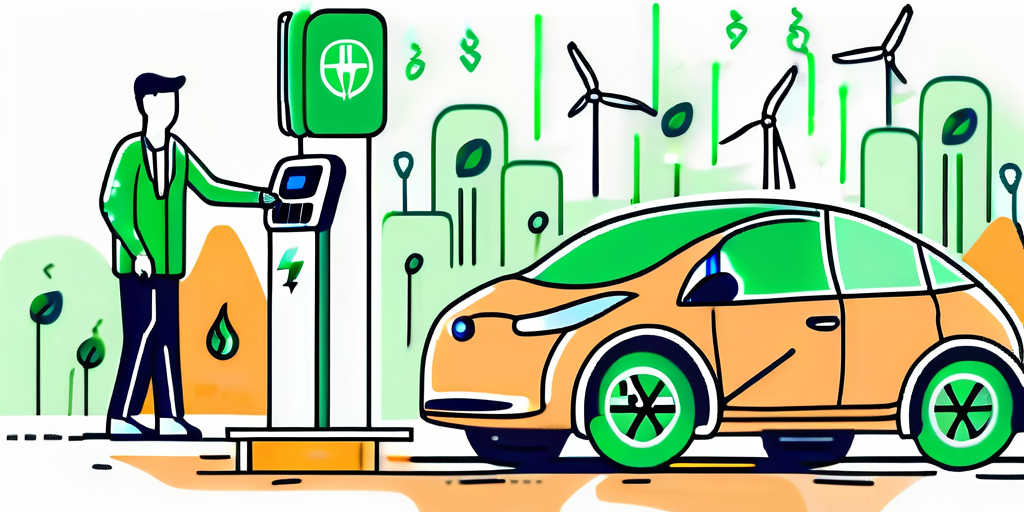
Do Teslas Save You Money? Exploring the Cost Benefits of Electric Cars
Electric cars have gained significant popularity in recent years, with Tesla being one of the leading brands in the market. As many people consider making the switch from traditional gasoline vehicles to electric cars, a question that often arises is, “Do Teslas save you money?” In this article, we will explore the various cost benefits associated with owning a Tesla and delve into whether these electric vehicles truly make financial sense in the long run.
The Initial Investment: Is the Higher Cost of a Tesla Worth It?
When it comes to purchasing a Tesla, one of the main considerations is the initial investment. There’s no denying that Tesla vehicles come with a higher price tag compared to their gasoline counterparts. However, it is important to look beyond just the sticker price and consider the long-term savings that can be achieved.

While the upfront cost may seem steep, Teslas often qualify for federal and state tax incentives, rebates, and grants. These financial incentives can significantly offset the initial cost and make owning a Tesla more affordable.
Additionally, the cost of charging an electric vehicle is typically lower than the cost of fueling a gasoline vehicle. This can result in considerable savings over time, especially as gasoline prices continue to fluctuate.
Moreover, the environmental benefits of owning a Tesla should not be overlooked. By driving an electric vehicle, you are contributing to lower greenhouse gas emissions and reducing your carbon footprint. This aligns with Tesla’s mission to accelerate the world’s transition to sustainable energy.
Furthermore, Tesla vehicles are known for their cutting-edge technology and innovative features. From autopilot capabilities to over-the-air software updates, owning a Tesla offers a futuristic driving experience that goes beyond traditional vehicles.
Long-Term Savings: Calculating the Cost of Ownership Over Time
When assessing the cost benefits of owning a Tesla, it is essential to consider the long-term savings. Electric vehicles generally have fewer moving parts and require less maintenance compared to their gasoline counterparts. This means lower maintenance costs, as there is no need for regular oil changes or extensive engine repairs.

Moreover, Tesla vehicles benefit from regenerative braking, which helps to extend the life of brake pads and reduces the need for replacement. These savings can add up over the years, making owning a Tesla more cost-effective in the long run.
Another factor to consider when calculating the cost of ownership over time is the savings on fuel expenses. Electric vehicles, such as Teslas, offer significantly lower fuel costs compared to traditional gasoline-powered cars. With the rising prices of gasoline, the savings from using electricity as a fuel source can be substantial.
Additionally, many regions offer incentives and tax credits for owning an electric vehicle, further reducing the overall cost of ownership. These incentives can include rebates on the purchase price, tax credits for installing a home charging station, or reduced registration fees for electric vehicles.
Tax Incentives and Rebates for Electric Vehicle Owners
One significant advantage of owning an electric vehicle, such as a Tesla, is the availability of various tax incentives and rebates. Government programs at both the federal and state levels often offer financial incentives to encourage the adoption of electric cars.

For example, the federal government offers a federal tax credit of up to $7,500 for the purchase of a new electric vehicle. This tax credit is designed to offset some of the upfront costs associated with buying an electric car, making it a more affordable option for many consumers. In addition to the federal tax credit, there are also state-specific incentives available in certain regions. These incentives can vary widely, from additional tax credits to special HOV lane access.
Several states also provide additional incentives, such as rebates or grants, to further reduce the cost of owning a Tesla. These state-level incentives can often be combined with the federal tax credit, maximizing the potential savings for electric vehicle owners. It’s important to note that these incentives are subject to change and may have specific eligibility requirements, so it’s essential to stay informed about the latest updates in your area.
Before purchasing a Tesla, it is crucial to research and understand the specific incentives and rebates available in your area. By taking advantage of these financial benefits, electric vehicle owners can not only save money on their initial purchase but also enjoy long-term savings on fuel and maintenance costs. Investing in an electric vehicle not only benefits the environment but can also be a smart financial decision in the long run.
Maintenance Costs: Comparing Electric Cars to Gasoline Vehicles
As mentioned earlier, one of the significant cost benefits of owning a Tesla is the lower maintenance costs. Unlike gasoline vehicles, Teslas do not require regular oil changes, and there are fewer components that wear out and need replacement.
Moreover, Tesla vehicles benefit from over-the-air software updates, which often include performance improvements and new features. This means that owners can enjoy the latest advancements without incurring any additional costs.
It is worth noting that, like any vehicle, Teslas may still require maintenance and repairs. However, many Tesla owners report spending less on maintenance compared to their previous gasoline vehicles.
Additionally, the regenerative braking system in electric vehicles like Teslas helps reduce wear and tear on brake pads, leading to longer brake life compared to traditional gasoline vehicles. This innovative technology converts the vehicle’s kinetic energy into electric energy, which not only enhances efficiency but also contributes to lower maintenance costs over time.
Furthermore, the simplified drivetrain of electric cars, such as Teslas, results in fewer moving parts that can break or malfunction. This streamlined design not only increases reliability but also reduces the frequency of maintenance tasks, providing owners with a hassle-free driving experience.
Charging Costs: How Much Does it Really Cost to Power a Tesla?
One of the common misconceptions about owning an electric vehicle is that charging costs are exorbitant. However, the reality is quite the opposite. Charging an electric vehicle, such as a Tesla, is typically cheaper than fueling a gasoline vehicle.
The cost of charging a Tesla depends on various factors, including the local electricity rates, the Tesla model, the battery size, and the driving habits of the owner. On average, charging at home using a residential electricity rate results in lower cost per mile compared to traditional gasoline vehicles.
Furthermore, many public charging stations offer free or discounted charging, further reducing the cost of powering a Tesla. With the increasing availability of charging infrastructure, it is becoming even more convenient and affordable to own an electric vehicle.
When considering the cost of charging a Tesla, it’s essential to take into account the environmental benefits as well. Electric vehicles produce zero tailpipe emissions, reducing air pollution and greenhouse gas emissions. By choosing to power a vehicle with electricity instead of gasoline, owners contribute to a cleaner and more sustainable future.
Another factor that influences charging costs is the time of day when the vehicle is charged. Some utility companies offer lower electricity rates during off-peak hours, making it more cost-effective to charge the Tesla overnight. This not only saves money but also helps balance the grid by utilizing electricity during times of lower demand.
Resale Value: Do Teslas Hold Their Value Better Than Gasoline Cars?
When considering the cost benefits of owning a Tesla, the vehicle’s resale value is an important aspect to examine. Teslas have demonstrated strong resale value, often outperforming their gasoline counterparts.
This higher resale value can offset some of the initial cost of the vehicle, making owning a Tesla more financially advantageous. Additionally, the continuous advancements in Tesla’s technology and the brand’s strong reputation contribute to the desirability and value retention of these electric vehicles.
It’s worth noting that the environmental impact of owning a Tesla also plays a role in its resale value. As the world shifts towards sustainable practices and electric vehicles become more mainstream, the demand for pre-owned Teslas is expected to rise. This trend not only benefits current Tesla owners looking to sell their vehicles but also highlights the long-term investment potential of owning an electric car.
Furthermore, Tesla’s unique over-the-air software updates provide an additional layer of value retention. Unlike traditional gasoline cars that may become outdated in terms of technology, Teslas can receive software upgrades that enhance performance, add new features, and improve overall driving experience. This adaptability and innovation contribute to the sustained appeal of Teslas in the resale market, making them a compelling choice for those looking to maximize both financial and technological value in their vehicle ownership.
Insurance Rates for Electric Vehicles: Are They Cheaper?
Insurance rates are another crucial factor to consider when evaluating the cost benefits of owning a Tesla. While insurance costs vary depending on various factors, such as the vehicle model, the driver’s profile, and the insurance provider, owning a Tesla may result in lower insurance rates.
Electric vehicles are often perceived to be safer than traditional gasoline vehicles due to their design and the presence of advanced safety features. As a result, some insurance companies offer discounts specifically for electric vehicle owners. It is advisable to check with multiple insurance providers to determine the most cost-effective coverage for your Tesla.
Furthermore, the repair costs for electric vehicles like Teslas can also impact insurance rates. Due to the specialized technology and components in electric vehicles, repair expenses can be higher compared to traditional vehicles. This factor is taken into consideration by insurance companies when determining premiums for electric vehicle owners.
Another aspect to consider is the availability of specialized insurance policies tailored for electric vehicles. Some insurance providers offer unique coverage options for electric cars, including coverage for battery-related issues, charging equipment, and other specific needs of electric vehicle owners. These specialized policies may come with different pricing structures and coverage limits, so it’s essential to explore all available options to find the best insurance plan for your Tesla.
Environmental Benefits of Driving a Tesla: Factoring in the Cost of Going Green
In addition to the financial advantages, owning a Tesla also brings numerous environmental benefits. Electric vehicles produce zero tailpipe emissions, reducing air pollution and contributing to a cleaner environment.
While these environmental benefits may not have an immediate financial impact, they play a vital role in reducing long-term costs associated with climate change and public health. Furthermore, as policies and regulations continue to focus on combating climate change, owning an electric vehicle, such as a Tesla, may provide additional incentives and benefits in the future.
One significant environmental benefit of driving a Tesla is the reduction of greenhouse gas emissions. Traditional gasoline-powered vehicles emit carbon dioxide and other greenhouse gases that contribute to global warming. By driving an electric vehicle like a Tesla, you are helping to lower the overall carbon footprint and combat climate change.
Moreover, the manufacturing process of Tesla vehicles also takes into account environmental sustainability. The company aims to use renewable energy sources in its production facilities and has implemented recycling programs to minimize waste. This commitment to eco-friendly practices extends beyond just the operation of the vehicle, making Tesla a leader in sustainable transportation.
Total Cost of Ownership: Understanding the Full Financial Picture
When evaluating the cost benefits of owning a Tesla, it is essential to assess the total cost of ownership. This includes the upfront cost, tax incentives, charging costs, maintenance expenses, insurance rates, and resale value.
While Teslas may have a higher initial cost compared to gasoline vehicles, the long-term savings associated with factors such as tax incentives, reduced fueling costs, and lower maintenance expenses can offset this initial investment. Additionally, the positive environmental impact of driving a Tesla adds further value to the overall financial picture.
It’s important to note that the cost of charging a Tesla can vary depending on where you live and how you charge your vehicle. Home charging is typically the most cost-effective option, with the average cost of electricity in the United States being around 13 cents per kilowatt-hour. However, public charging stations or fast-charging options may come with higher costs, so it’s crucial to factor this into your overall ownership expenses.
Furthermore, insurance rates for Teslas can also differ from traditional vehicles due to their advanced technology and repair costs. While some insurance companies offer discounts for electric vehicles, it’s recommended to shop around for the best rates and coverage options to ensure you’re getting the most value out of your insurance policy. Considering all these factors together provides a comprehensive understanding of the total cost of ownership of a Tesla and allows for a more informed financial decision.
The Future of Electric Cars: Will Prices Continue to Drop?
As technology advances and the demand for electric vehicles continues to rise, it is reasonable to expect that prices will gradually decrease. Tesla has already made significant strides in driving down the cost of electric vehicles and expanding their affordability.
Moreover, as governments worldwide prioritize sustainable transportation, additional financial incentives and subsidies may be introduced to encourage the adoption of electric cars. This trend towards affordability and increased accessibility bodes well for the future of electric vehicles, including Teslas.
In conclusion, while there may be an initial higher cost associated with owning a Tesla, the long-term savings, tax incentives, lower maintenance costs, and cheaper charging expenses make them a financially viable option. Additionally, the positive environmental impact further contributes to the overall value of owning an electric vehicle. As technology continues to evolve, the future holds even greater potential for cost benefits and accessibility in the world of electric cars.


